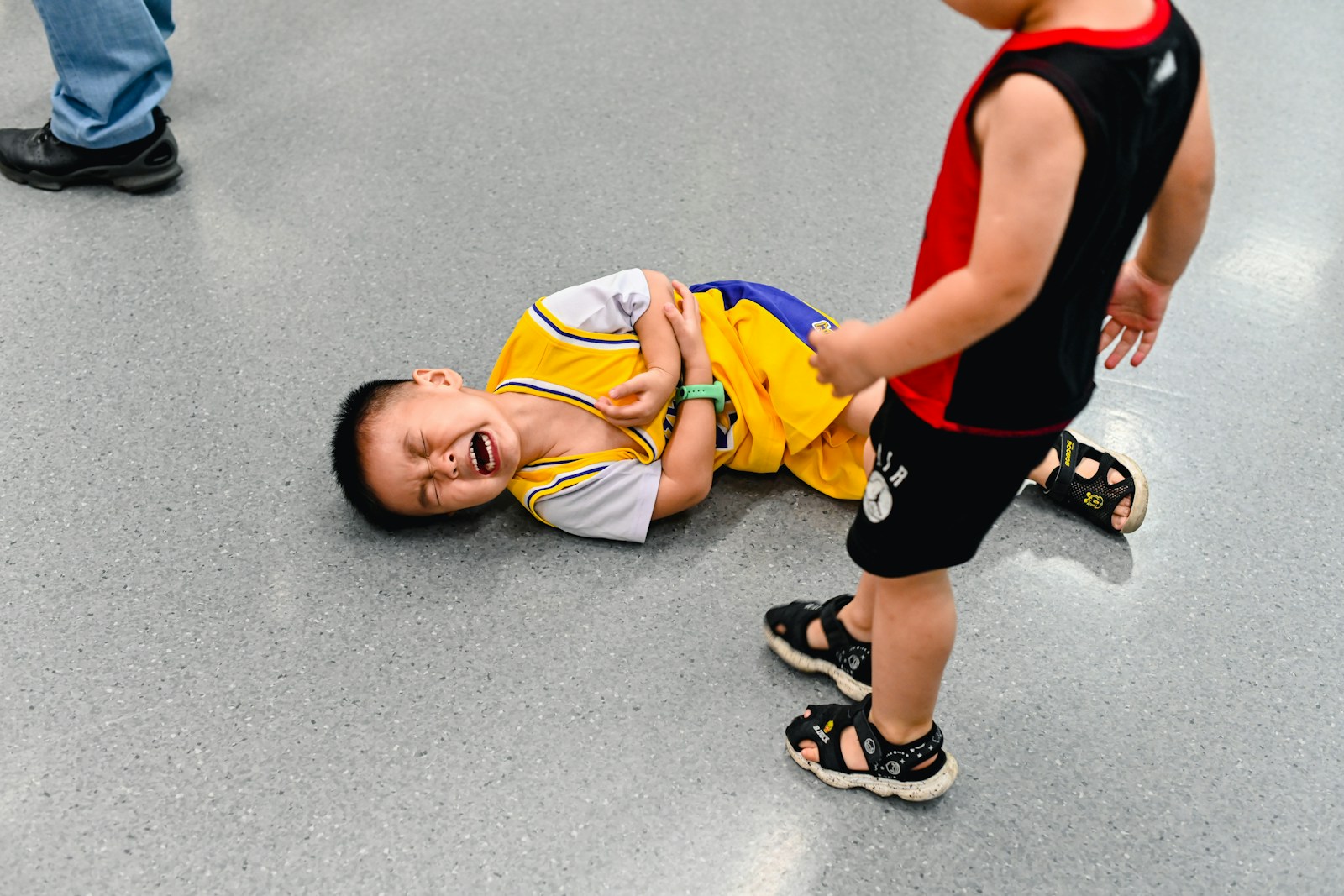The post Four Harms of a screen-based childhood: Learning from The Anxious Generation by Jonathan Haidt appeared first on Linda Smallbones.
]]>18 October 2024
As promised in my post a few weeks ago, I am unpacking some of my learning from reading The Anxious Generation by Jonathan Haidt. In chapter 5 of the book he looks at 4 major harms caused by social media, online gaming and increased screen-based childhood in general.
The four harms are social deprivation, sleep deprivation, attention fragmentation and addiction. Haidt goes into a lot of detail about each harm in regards to research. I won’t regurgitate what he has said, but give a summary and some evidence base. Do notice, as you read, this may apply to you too (as it most definitely does to me).
Social deprivation
Children, including teenagers, need a lot of play time daily for their healthy development. Play needs to be face to face, synchronous and physical. This means, they need to be with peers, in person and have use their bodies to interact with the environment and with one another. Think of your own childhood (Gen X and Millennial parents) where you walked or rode your bike to a friends house or met up somewhere and figured out together what you wanted to do with your time.
“The healthiest play is outdoors and includes occasional physical risk-taking and thrilling adventure.” Haidt, 2024.
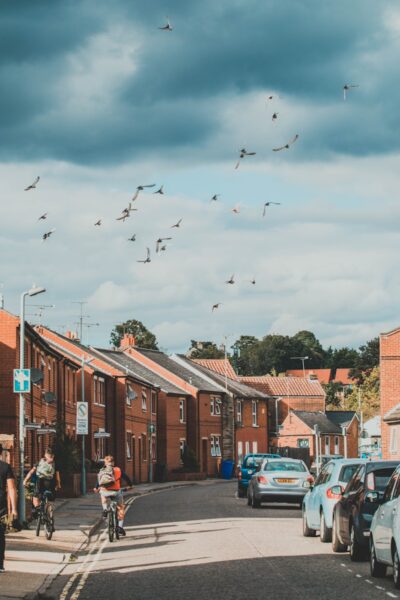
Photo by Super Straho on Unsplash
It is worth repeating; teens still need to play. It may look different at 15 years old compared to 8 years old, but they need play. The more time they have for face to face interactions with peers, without screens, the better. The presence of smart phones with notifications switched on interrupt social time and in some cases make it impossible to be present.
If we think about this in an adult context, how many of us have been having “quality time” with a friend and been interrupted more than once by our own or our friend’s cell phone notifications? And not just more than once, but at least 3 times? And not just by the phone, but also by the smartwatch buzzing? As adults, we’re depriving ourselves socially when we allow these disturbances during our face to face social time. We need to re-train ourselves as much as we need to help our teens.
Sleep deprivation
I wrote a blog a while ago about the WHO recommendations for sleep, play and exercise. Time on screens cannot replace any of these elements which contribute to healthy growth and development.
There are many studies that show a causal link between sleep deprivation and the rise of the phone-based childhood.
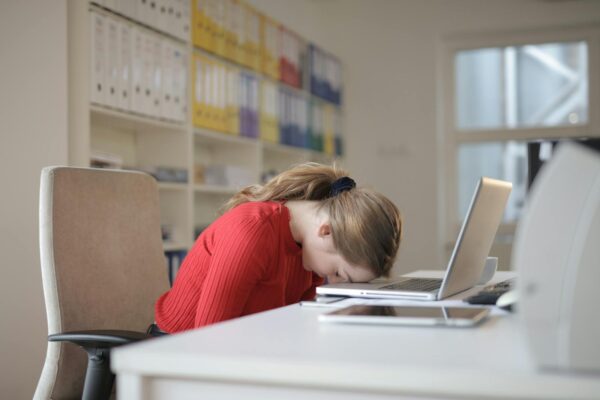
Photo by Andrea Piacquadio on Pexels
When teens do not get enough sleep, they are not able to concentrate as well, their learning suffers, and they can be more anxious and irritable. Sounds like us adults too, no?! General guidelines are that tweens (9 – 12 year olds) need at least 9 hours of sleep a night and teens need at least 8 hours.
Jean Twenge is an American Professor who has produced prolific research in this area, and you can explore her work further if you’re interested.
Attention fragmentation
“Attention is the choice we make to stay on one task, one line of thinking, one mental road, even as attractive off-ramps beckon. When we fail to make that choice and allow ourselves to be frequently side-tracked, we end up confused, dazed, scatterbrained… in other words, fragmented.” Nicholas Carr author of The Shallows: What the internet is doing to our brains. 2010.
When I read this section, I have to say I felt convicted of falling ‘victim’ to this fragmentation trap. But the truth is, I am not a victim at all, I am someone who gets to make choices and is trying to make better choices to stay in focus where and when I need to be. I have found having a mindset that my attention is really valuable and I can spend a bit of time thinking about what or who to give it to, is empowering.
But our teens aren’t there yet, and we need to help them to start thinking about it. Haidt writes that adults have their attention quite easily hijacked, and teens even more so as they do not yet have a fully developed pre-frontal cortex that can help them stay on-task.
Teenagers are growing up in a time where flitting between different activities, conversations, and tasks is the norm. Smartphones provide a never-ending stream of interruptions.
“People can’t really multi-task; all we can do is shift attention back and forth between tasks while wasting a lot of it on each shift.” (Madore & Wagner, 2019)
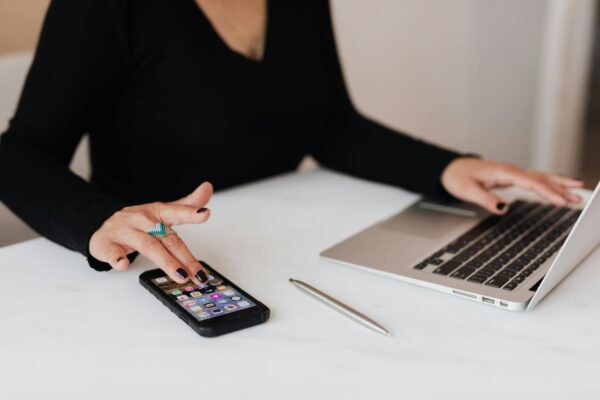
Photo by Photo By: Kaboompics.com on Pexels
“When adolescents have continuous access to a smartphone at their developmentally sensitive age, it may interfere with their maturing ability to focus.” writes Haidt. If we think about what is required to engage in meaningful learning, attention is one of our most precious commodities.
If you as an adult are struggling with attention fragmentation, assume your teen is too. Chat about it with them; tell them what it is and ask how you can help. As I have said before, you can set screentime limits and boundaries and help them with this because likely they won’t be able to do it for themselves.
When we are constantly in a state of fragmentation of our attention, we cannot undertake deep work. Cal Newport defines deep work as
” Activities performed in a state of distraction-free concentration that push your cognitive capabilities to their limit. These efforts create new value, improve your skill, and are hard to replicate.” in Deep Work. 2016.
Although Newport is referring to a professional, adult context, I believe this is also applicable to teenagers. Imagine helping them cultivate skills for focused attention now, in a world of people who have their attention fragmented. Teenagers are capable of amazing things; some have started their own businesses or invented things that help others. This is only possible for those who do the deep work, and who put in the time to discover where their unique talents can positively impact the world.
Addiction
Creators of social media and games have absolutely mastered how to use the brain’s pleasure chemical – dopamine – to get people hooked onto what they are offering. Dopamine is a reward that creates more wanting and doesn’t satisfy us.
Not everyone using social media or gaming is addicted, but the natural feedback loop of pleasure in our bodies is definitely being exploited.
We need to bear in mind always that the creators of games, apps and controllers of social media DO NOT CARE ABOUT YOUR TEEN, or you. They care about making money, and that is (literally) the bottom line. People being addicted to digital use serves their agenda perfectly.
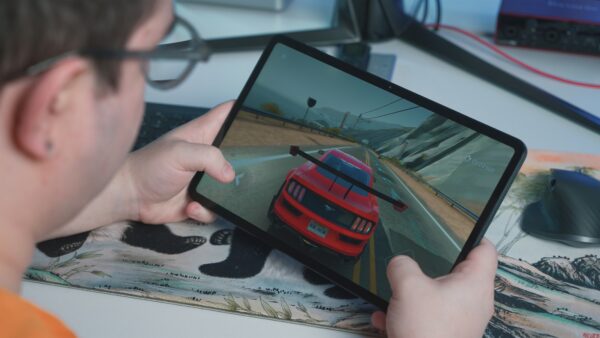
Photo by Onur Binay on Unsplash
Haidt cites Anna Lembke who wrote a book called Dopamine Nation. She found that teens who are heavy digital users (gaming and social media), stated that nothing feels good anymore, when they were not engaged in their preferred screen activities. Those withdrawing from all screen use experienced feelings of anxiety, irritability, insomnia and a general sense of unease.
Teens addicted to digital use tend to suffer all of the other harms already discussed as well. I remember attending an Online Safety conference in London in 2018 hosted by the NSPCC. Some medical doctors presented cases of addicted teens to the conference and it was horrific. One teen spent so many hours back to back gaming that he never ate or drank or used the bathroom. The result was bowels so impacted that they initially thought he had a growth.
Addiction to screens is real, for us and for our teens. For our teens, the impact on the developing brain can be immense. Consult your doctor or a health professional you trust if you suspect your child might be addicted.
What do you think of these 4 harms? What other harms are you seeing in your children or those you work with?
I’d love to hear your thoughts!
Advanced Notice!
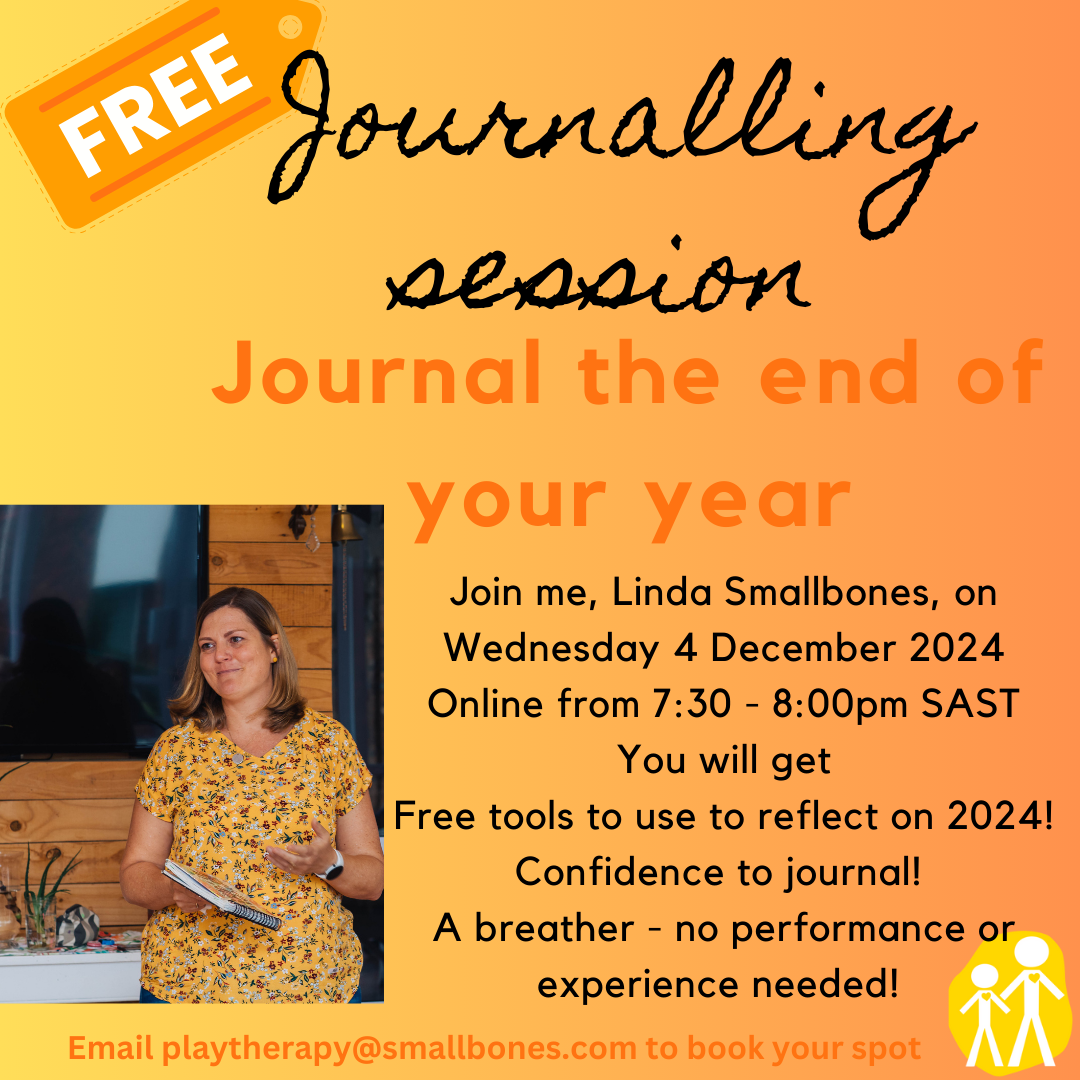
The post Four Harms of a screen-based childhood: Learning from The Anxious Generation by Jonathan Haidt appeared first on Linda Smallbones.
]]>The post Child on child abuse: An increasing reality and one family’s story appeared first on Linda Smallbones.
]]>2 February 2024
Problematic sexual behaviour in children
I want to draw attention to something that is by no means easy to talk about, let alone think about. I am seeing a marked increase in inappropriate/problematic sexualized behaviour between children. In talking to colleagues also working with children, this is happening everywhere. This is beyond the normal sexual development of “you show me yours, I’ll show you mine”.
Problematic sexualised behaviour is when there is sexualised play between children of the same age, or different ages when one or both children appear to have a lot of sexual knowledge beyond their years and act out sexually with another child, or force the other child to act out sexually with them.
“Premature sexual activity in children always suggests two possible stimulants: experience and exposure. The child exhibiting premature sexual activity may have experienced sexual contact with an adult or older child and may be mimicking the learned behaviour, or the child may have been overstimulated by exposure to explicit sexual activity and may be acting this activity out. Many young children have access to soft-or hard-core pornography on their television sets.” Eliana Gil, 1991.
Obviously, Eliana Gil wrote this quote in her book The Healing Power of Play, before the internet exploded and children had almost unlimited access to screens in many households – across the world.
Please, do not ignore the warning. Sexualised behaviour between children is increasing in an alarming way and parents need to safeguard their children.
How do I safeguard my child?
A good place to start is to ensure you do not give your child their own device when they are too young. What is too young? There is no “rule” or absolute age. But we do know that many people in the tech world limit their children’s screen time. These being the people who create the tech, and market the social media we all engage with daily. https://www.businessinsider.com/tech-execs-screen-time-children-bill-gates-steve-jobs-2019-9 . I highly recommend watching The Social Dilemma on Netflix.
Photo by geralt on PixabayThe actress Kate Winslet has famously not allowed her children to be on social media at all. She said “You don’t get your childhood back”.
https://www-bbc-co-uk.cdn.ampproject.org/c/s/www.bbc.co.uk/news/entertainment-arts-63832696.amp
You can read a previous blog of mine here, on screentime guidelines for children of all ages, set by the World Health Organization.
Of course, exposure through TV or social media and/or access to pornography whether by purposeful searching or by accident, is only one way children might become inappropriately sexualised. Tragically, sexual abuse of children (girls AND boys) is extremely high in South Africa. The Optimus Study (2016) found that 35.4% of children had experienced some form of sexual abuse in their lifetime.
The experience of sexual abuse can trigger problematic sexual behaviour, especially when a child is unable to get the help they need.
Normal sexual development and behaviour
It’s hard to think of children as sexual beings, but this is very different to them being sexualised. Children’s sexual development is a normal part of their biological development. It is incremental growth that happens over time, usually as they enter puberty and adolescence, they become more interested in relationships and knowing about sex. Hormones flick a switch on internally that starts making growing adolescents ready for consensual sexual relationships later on when they are cognitively, socially, emotionally and physically ready.
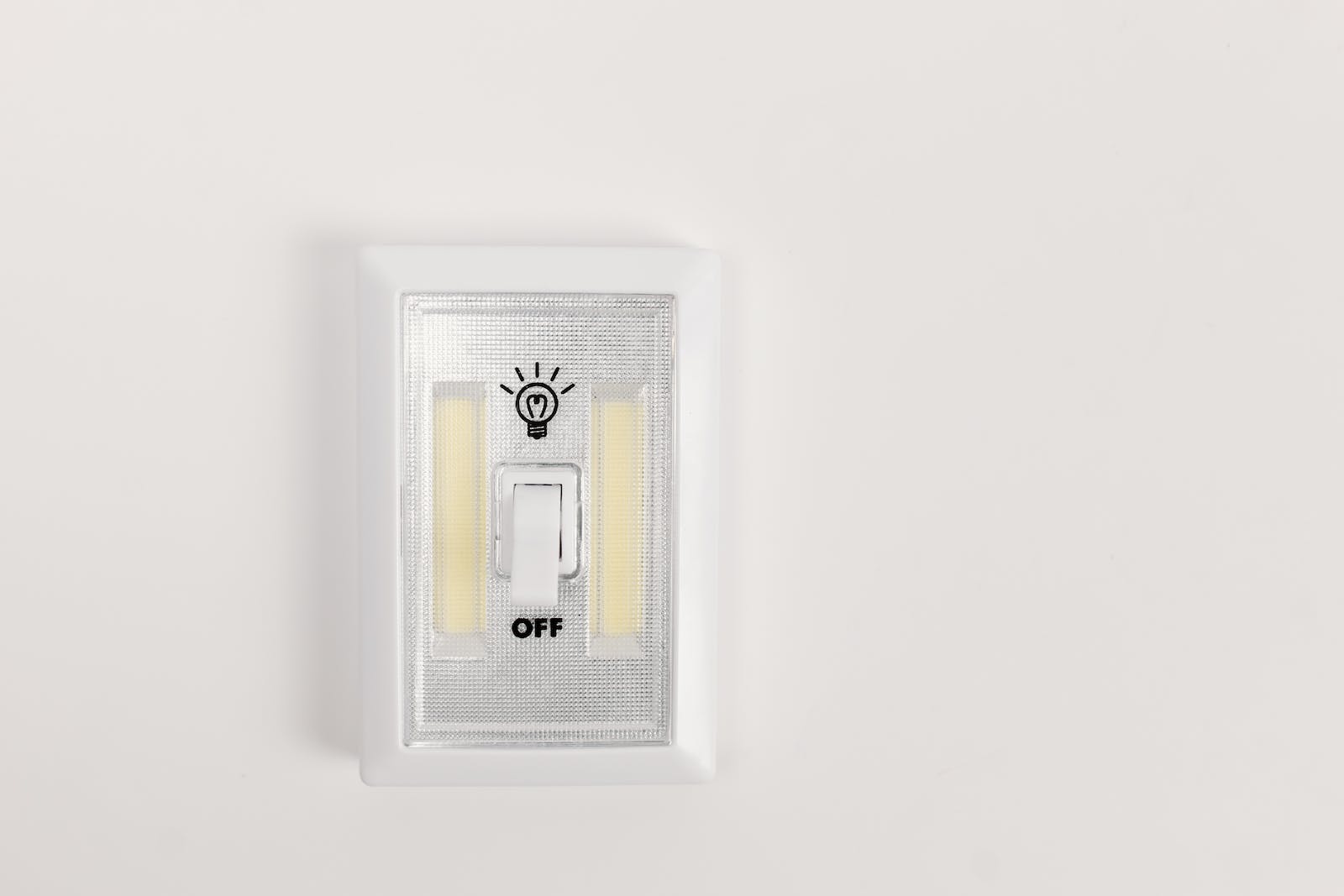
Photo by Tara Winstead on Pexels
Problematic or inappropriate sexualised behaviour happens when that “switch” is flicked on way before time, either through exposure or experience. The child is then bombarded with sexual information that they are in no way ready to process or understand. There is so much shame around talking about our bodies, sex and abuse that children very often don’t talk to anyone about what has happened, or what they might have been exposed to.
Normal “sexual” play in young children is playful, curious and innocent. It is children being curious about their bodies and that of others; how they are different and how they are the same. In normal sexual development, children simply have questions they want answered, there is no coercion, their behaviour is not sexually motivated in any way. They may be inappropriate – such as trying to look down another child’s underwear! But they’re doing this out of innocence and it is the work of the adults in children’s lives to teach them what is socially acceptable and not. AND, to talk to them about their bodies.
Many parents express reluctance/fear in talking to their children about their bodies, giving genitals their correct names, and talking about where babies come from. There are many good reasons for this fear and/or reluctance. However, we need to have these conversations with our children.
One family’s story: Child on child abuse on a play date
I have been journeying with one family whose child was 4 years old when they were a victim of serious sexualised behaviour perpetrated by another child several years older. (Details are changed to protect anonymity).
Mom did all the body safety work with her children, from the time they were toddlers. This was an ongoing conversation happening as the children grew, and conversations happened organically as the family went about their days. However, one child was subject to inappropriate sexualised behaviour by an older child (more than 3 years older) during a play date at which mom was present. This child did tell mom some time after the sexualised behaviour had started, and I believe the child was able to tell because mom had opened up the conversation in the first place.
Stop the bus. Why, if a parent does the safeguarding work, does this child not “just say no” and run away? Here is a crucial fact. Where one child has power of some kind over another, it is often almost impossible to say no to that child. (You can also substitute “adult” for child into that sentence). Sometimes we expect way too much of children to stand up to others who have more power than them whether it be a stronger body, louder voice or simply more authority and charisma. What’s more, if parents are affirming the relationship, then everything must be ok. To consider that it is not ok in that moment is too threatening, and so going along with it is easier.
The mom discussed with me how before play dates (which is where the inappropriate sexualised behaviour occurred), she would remind her children to be kind and play nicely. And what do children understand by “playing nicely”, well, they make the assumption that they need to be cooperative, and that they assume they can trust the other kids on the play date to have their best interests at heart. Because it’s a play date and they’re friends, right?!
Processing play dates
She wishes instead that she had given a clear message that it is not the children’s responsibility to keep other children happy. We discussed some different ways of talking to our kids about their social encounters with others. I’ve shared this in a previous blog, that I used to ask my children “did you feel safe?” after play dates. The follow up question was, “what made you feel safe?” or, “What made you feel unsafe?” This mom shared with me her go to question after play dates is “What were the highlights and lowlights on that play date for you?”
These questions give your children permission to reflect on their social encounters and experiences and start to think about what they feel comfortable or uncomfortable with.
Don’t sacrifice safety for people-pleasing
The fact is: Our children do not have to be kind and polite at all costs if someone is making them feel uncomfortable about their boundaries and body boundaries in some way. You can help give your children an “out” by telling them if they ever feel uncomfortable in a situation, they can use mom as the excuse. “My mom says I can’t do that.” Or “Let me just go check that with my mom, I don’t think she wants me to do that.”
This mom’s message to others now is: Don’t trust people blindly. Abuse happens in the most innocent spaces, we don’t know what other children have been exposed to that may in some way impact our own children.
Red flags of inappropriate sexualised behaviour
I asked this mom what she would now consider to be red flags of problematic or inappropriate sexualised behaviour. She shared to look out for children trying to continually isolate specific children from others, and engaging in secretive behaviour. Then, she noticed her child was having outbursts for no apparent reason and using some manipulative behaviour. The child also experienced constipation for some time. It only became clear in retrospect where these behaviours came from, but if you have any niggles at all, investigate further.
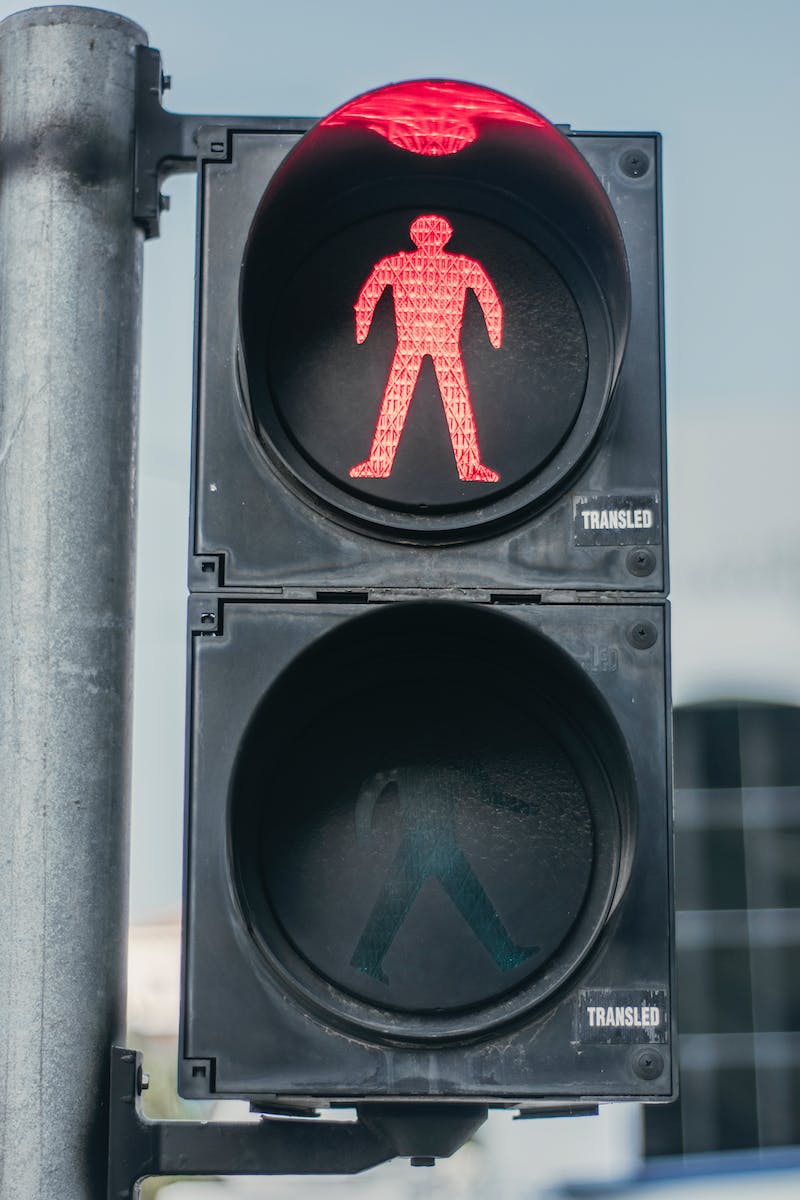
A red flag is a warning. Like the red man on a traffic light, it tells you something is not safe. Stop and investigate.
By investigate further, I mean first and foremost make more time to connect with your child. Move closer (without smothering) and be present and available. Make time to be alone with them, show them you are there. Give opportunities for them to share in case there is something they need to disclose. Discuss any “red flag” behaviour with a psychologist or social worker just so that you get a professional perspective. A child-friendly investigation using play therapy techniques may be needed to ascertain if there has been any exposure to any inappropriate sexual behaviour. Also, check on parental controls on all devices and ensure there is no access to inappropriate content.
Help & Healing
I asked the mom how she went about healing for herself from this traumatic situation. She said having someone to talk to, and an objective, professional outside opinion has been crucial for her.
Please don’t keep silent if you are concerned about your child’s behaviour, especially if it has become sexualised. Shame and embarrassment keep us silent too often and then our children don’t get the help they need. You may be in a position where someone has reported that your child’s behaviour has been sexually inappropriate. Do not punish your child and do not ignore the behaviour. Seek help.
Next week I will share several resources on how to address topics of sexuality education and body boundaries with your child.
In the meantime, check on your child’s online usage and ensure you are supervising their screentime. These are things you can control.
The post Child on child abuse: An increasing reality and one family’s story appeared first on Linda Smallbones.
]]>The post Building online safety for your family. <br>Part 2: Navigating online risks</br> appeared first on Linda Smallbones.
]]>This is about equipping ourselves to safeguard our children, the digital natives in our lives. Let’s think about some of the risks and add to what we can do to mitigate against them.
The following risks are things I would far rather not think about, and yet they exist and we need to know about them. In no way am I wanting to be a fearmonger. This is about equipping ourselves to safeguard our children, the digital natives in our lives. Let’s think about some of the risks and add to what we can do to mitigate against them.
You can read part 1 here
Creepy people
There are predators who know how to find vulnerable children online and try to exploit them. I recently read a blog article talking about “sad fishing”. This is the process of predators actively looking for kids online who appear depressed/sad/lonely, identifying them via their social media status updates. Because what is true in real life is also true in the digital world; predators attempt to groom kids who appear a little distant from others emotionally or socially. You can read the blog article here https://protectyoungeyes.com/no-digital-secrets-3-actions-respond-porn-predators/and I highly recommend signing up for Protect Young Eyes (PYE) emails to keep on top of the apps and games your kids are interacting with. PYE will be launching a Masterclass for families online quite soon, have a look at their website if you’re interested. www.protectyoungeyes.com
I read a report on the impact of technology-assisted (online) child abuse versus child abuse in person. The shocking bottom line in the findings is that technology-assisted abuse (perpetrated by those creepy people referenced above), has more invasive and enduring impacts that in person abuse.
Here is a link to the research report if you want to know more https://learning.nspcc.org.uk/research-resources/2017/impact-online-offline-child-sexual-abuse
Always find out who your children are interacting with online- highly recommended only people they already know in real life- and have those parental controls in place. Exactly how you protect your children in real life, is how you need to think about protecting them online. Supervise them, know who they’re spending time with, make sure they know you’re available to talk no matter what.
Pornography
This is such a huge and pervasive issue throughout society that it needs its own conversation, maybe a post for another day. However, it is important to keep acknowledging the very real existence of pornography and the impact it has on all of us, and more and more on our children.
The average age of children in South Africa being exposed to pornography is 11. But I know of children who have had exposure even younger, and some have become addicted. I will say that again, children as young as primary school age are becoming addicted to pornography. And it is important to note that boys as well as girls are being exposed and becoming addicted to porn.
You may find it hard to talk to your children about their bodies, harder still to talk about sex and so porn may be the very last thing you feel equipped to talk about. There are resources out there to help.
Good Pictures, Bad Pictures is a book by Kristen Jenson and Gail Poyner. Written specifically for children and as a guide to parents to help talk through the topic of pornography without shame. There is also How to talk to your kids about pornography by Dina Alexander, Amanda Scott and Jenny Webb. This is a link to an article by Dina Alexander about the book https://educateempowerkids.org/new-book-simplifies-porn-coversations/
Both of these books are available on Loot.co.za if you’re in South Africa.
Pornography has infiltrated even fledgling romantic relationships as sexting appears to be a rite of passage in many adolescent relationships. Sexting is the sending of nude pictures, nude pictures of children under the age of 18 are considered pornography and therefore unlawful. For more information on South African law and digital media, Emma Sadleir’s book, Selfies, Sexts, and Smartphones is easy to read for parents and adolescents. Her website also has a lot of useful information and resources www.thedigitallawco.com.
The enduring impact of digital content
We grow up making stupid mistakes and learning from them, as we should do. However, now if a friend videos a stupid mistake, we are never allowed to forget and move on, and may even find our digital footprint coming back to impact our opportunities later in life. These mistakes can be really small, or really massive. The point is the shame of them can become enduring and damaging when we are never allowed to move on from them. Who we are at 10 years old, or 16 years old should not determine how we are seen as a 30 year old adult.
We can’t always control what and when other people are recording of us, but when our children are with peers who have smartphones and social media accounts, this is one of the conversations we should be having with them. When do they feel comfortable to be filmed or photographed by friends? How do they talk to their friends about this? Are they comfortable being photographed for their friend’s social media? We need to help our children talk about consent in the context of digital media.
Children need to know that whatever digital content they create, it should be something they can be proud of themselves for creating. Can they apply “the granny rule” – if granny was to see the content would they still feel good about it, or would they feel embarrassed? Perhaps if a child or adolescent is not able to think through and discuss “the granny rule” with you then they’re not ready for their own smartphone or their own social media accounts.
Cyber bullying
Bullying has been around forever. Cyberbullying is a new level of abuse as the bullied person does not get a break, the bullying voices follow them everywhere and at all times of day and night. It can include deliberately excluding someone from online games or friendship groups, sending threatening or degrading messages, creating or sharing malicious videos, trolling, setting up hate sites or groups about a specific child, or stealing online identities in order to embarrass or cause trouble for a child. (from https://learning.nspcc.org.uk/child-abuse-and-neglect/bullying).
We need to continually talk to our children about being kind; both online and in person. Abusive behaviour online is often more impactful and enduring than in person because it is not easily erased. We need to give the clear message that bullying is unacceptable, but help is available. We need to always be the safe space our children can turn to for help, whether they have been bullied or been the bully.
What can we do?
Keep talking, keep learning, and ensure you monitor your child’s online activities.
As children grow, we need to acknowledge their evolving capacities for participation and decision making, with the appropriate safe guards in place. Every holiday our family makes a schedule for screen time that our children have input into. It’s not rigid, but it does help to have an agreement to refer back to. Complete “no screen days” are also scheduled.
Find a way to keep yourself updated about apps and games your children are engaging with. Choose the best parental controls for your families needs, but discuss what these are and why you are using them with your children. We need to find ways to build trust with our children on this journey rather than them feeling that we’re spying on them or not trusting them. In reality in most cases, it’s the dangers of the internet we don’t trust, not our children.
The post Building online safety for your family. <br>Part 2: Navigating online risks</br> appeared first on Linda Smallbones.
]]>The post Building onlines safety in your family. <br>Part 1. Intentional parenting.</br> appeared first on Linda Smallbones.
]]>With the best will in the world, and all the information in the world, our children cannot remain safe online if we are not aware of what they’re doing online.
We find ourselves very suddenly at home with our children, navigating adjusted level 4 with no gatherings. Less or no play dates for kids (depending on how you interpret “gatherings’), more time at home keeping safe from being infected, or recovering from the virus. All of this could add up to more screen time. Anecdotal evidence I have gathered speaking to parents over the past year suggests that children have spent much more time on screens than previously.
My appeal to you is to parent with great intention when it comes to your child’s screen time. With the best will in the world, and all the information in the world, our children cannot remain safe online if we are not aware of what they’re doing online. Here are a few ideas about becoming more intentional.
Don’t plead ignorance
Sometimes we feel our children know more than us, and we don’t lead them, we wait for them to lead us in the digital world. But this thinking puts children at risk. They may be digitally more literate, but they are still not equipped to cope with the online world alone. Imagine you arrive with your family in an unfamiliar city and stop, you say to the kids “Ok, hop out, off you go and enjoy the exploration!” without so much as giving them a map or directions or how and when to find the family again. We would never do that. What we need to understand or shift in our thinking is that just because the digital world is “unseen” in many respects does not make it any less dangerous, in fact it could be more dangerous.
Educate yourself, consult experts, do what you need to do to ensure your children aren’t left out in the big city all alone.
You can contact Christy Herselman, creator of the Chat, to consult on digital safety plans in the family. www.thechat.co.za. Christy offers one-on-one and family consultations.
I subscribe to Protect Young Eyes (PYE) www.protectyoungeyes.com, a company that reviews apps and helps keep families updated with risks, trends, safety advice and information on all things digital. They are also about to launch a Masterclass for parents on online safety.
Find out what they’re doing online
Have ongoing conversations with your children about what they’re watching/playing/making online. Ask them to teach you one of the games they’re playing, if they’re into Minecraft let them take you on a tour of their world. If they have their own phone and tablet, look at the apps they’re using. Ask them how things work. Ask them how playing certain games/apps make them feel. What do they enjoy about being online? What do they not enjoy?
Have a screen time plan
Make a family plan for screen time. You will need to review this fairly frequently as children grow and their needs change. It’s a good boundary, but there should be a bit of flexibility where needed.
Right now, in our family during school holidays there is a 2 hour a day limit on screen time, and two days of the week are completely screen free. A recent change has been made to this plan in that they are allowed an additional 2 hours a week of research or creative time. This is time that must be productive, such as editing a video or doing an online course. The flexibility in our plan comes over weekends where we watch family movies together that are over and above the kids screen time. However, we also reserve the right to reduce or even cancel screen time if there has been too much, or their behaviour has been questionable. Because screen time is absolutely a privilege and not a right.
It is helpful to have a screen time plan written out for all to see and remember, especially if it’s a new boundary you’re putting in place. Everyone in the family can contribute to this plan, and sign it once agreed upon. For those of us who have lost hours and hours of our lives negotiating screen time, this plan could be very helpful!
Have a safety plan
There are many parental controls available for different devices. Bark is one such app that monitors online activity. These type of parental controls should be used as transparently as possible with your children; they should know they are being monitored and why. Here is a review of the Bark app by a parent https://wordfromthebird.blog/the-blog/bark-parental-control-review-honest/
Long term goals
When you’re making decisions now about screen time, think about the long term effects. I want my children to leave home one day and know how to spend time away from their screens. I want them to know how to have face to face conversations. I want them to be able to talk about many things and not only what they watched on YouTube. I want them to be interesting, interested people who are actually in tune with the world around them. (And for all the information overload the internet offers us, screen-addicted people are fairly boring people, in my humble opinion.)
Be self- aware
Think about your own screen time use, especially when your children can see you. Are you happy with the time you spend on social media, is it satisfying or fulfilling to you? Is it meeting your needs or is it a numbing tool? When you think about the length of time children see you sitting on a screen for leisure do you feel ok with it? Whatever values and practices you’re trying to instill in your children around screen time, you need to model these first.
Offer alternatives
Offering face to face play and interactions is always a wonderful way to get children off screens. When you limit screen time, make sure you spend some of that time doing something together. This doesn’t mean we have to entertain our children constantly. But we do have to remind them and ourselves that play in real life is as important (if not more so) than through a screen!
Stay tuned for Part 2 which will be looking at risks and resources.
I have been thinking about online usage and safety for our children for a long time. There is a lot to think about. So much so that I am going to do a mini-series over a few weeks…I would be keen to hear your vews, feedback, advice and practices as we go. Feel free to email me on [email protected]
The post Building onlines safety in your family. <br>Part 1. Intentional parenting.</br> appeared first on Linda Smallbones.
]]>The post Keeping your child safe online during times of lockdown appeared first on Linda Smallbones.
]]>Abusers of children are really tuned in to when, where and how they can access children. They know children in general may be vulnerable at present and that they may have more screen time than usual right now. Abusers will manipulate all of this to their advantage.
In countries all over the world, including South Africa, there have been warnings that online abuse of children would increase during periods of lockdown – and unfortunately, this has proven to be the case.
As some parents try to work from home AND supervise their kids at the same time (good luck to us), it is hard to keep tabs on what children are up to online. This is a really good time to think about your family’s online practices. Have you ever sat down together and made a plan on how, when and where members of the family use social media? Now would be a really good time.
Childnet.com has a really great set of templates for setting up a family agreement. You can access them here. You could even consider drafting a specific agreement for this period of time, to be reviewed as things change and return to normal.
Abusers of children are really tuned in to when, where and how they can access children. They know children in general may be vulnerable at present and that they may have more screen time than usual right now. Abusers will manipulate all of this to their advantage.
Yes, online abuse is a real thing. Initial research has shown that online abuse has an equal if not greater detrimental impact compared to in-person abuse. Online abuse is any type of abuse that happens on the internet. It can happen on any device connected to the internet including cell phones, tablets and personal computers. It can also happen anywhere online including via online gaming, text messages, social media, and emails. (nspcc.org.uk). Online abuse includes sexting and cyberbullying.
This South African resource, #wellconnected, by Christy Herselman, is an excellent way of broaching the topic of online safety with your children. You can find out more (and buy the book post-lockdown), on their website. This book is great for 9 – 12-year-olds (although could be used with mature 7 and 8-year-olds)
For adolescents, I would highly recommend Emma Sadleir and Lizzie Harrison’s “Selfies, Sexts and Smartphones.” This is really easy and informative to read and written in an extremely relevant style. You can find it at The Digital Law Company website. Again, this is a South African resource which just means it refers to our particular context and the particular laws that we live under (don’t worry, they make the law sound really interesting! Really!)
In the absence of resources, you as the parent are still your child’s greatest resource! My personal recommendation during this time would be to encourage as much ‘offline’ activity as possible and to spend as much time face to face with your children as you’re able to (until needing to engage in those much-needed self-care practices!). Remember that online life is still real life and needs to be guarded just as closely, if not more so!
The post Keeping your child safe online during times of lockdown appeared first on Linda Smallbones.
]]>
